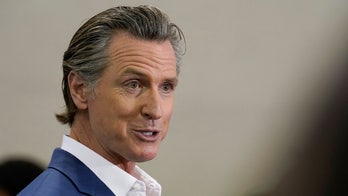Vice President Kamala Harris is advocating for price controls to fight inflation, but a look at history shows that such measures have often failed and led to unintended consequences.
In the face of rising inflation and a struggling economy, Vice President Kamala Harris has proposed price controls as a solution to curb the rising costs of goods and services. However, a look at history suggests that such measures have often failed and led to unintended consequences.
Price controls are government-imposed limits on the prices that businesses can charge for their products or services. The goal is to prevent businesses from raising prices beyond a certain level, thereby protecting consumers from price gouging.

Kamala Harris' Price Control Proposal: A History Lesson By Carol Roth
While this may seem like a sensible approach on the surface, history provides ample evidence of the pitfalls associated with price controls. One of the most famous examples is the case of the Price Control Act of 1971 enacted under President Richard Nixon.
The act imposed wage and price controls in an attempt to curb inflation, which had been on the rise since the mid-1960s. However, the controls had a number of negative effects, including shortages of goods, declining economic output, and a loss of confidence in the economy.

Kamala Harris' Price Control Proposal: A History Lesson By Carol Roth
Another example is the case of Venezuela, where price controls have been used extensively in recent years. While the controls have helped to keep prices of some basic goods low, they have also led to severe shortages of food, medicine, and other essential items.
The reason why price controls often fail is that they interfere with the natural forces of supply and demand. When prices are artificially lowered below the market equilibrium, businesses are less likely to produce goods and services, leading to shortages.

Kamala Harris' Price Control Proposal: A History Lesson By Carol Roth
Moreover, price controls can create incentives for businesses to reduce the quality of their products or services or to engage in black market activities. For example, during the Nixon-era price controls, businesses were known to lower the quality of their products or to sell them on the black market at higher prices.
In addition to these unintended consequences, price controls can also hinder economic growth by stifling competition and innovation. When businesses are unable to raise prices, they have less incentive to invest in new products and technologies.

Kamala Harris' Price Control Proposal: A History Lesson By Carol Roth
Furthermore, price controls can be difficult to enforce, especially in complex economies with multiple industries and products. The government would need to create a vast bureaucracy to monitor prices and punish violators, which would be costly and inefficient.
In the case of Kamala Harris' proposal, there is no guarantee that it would be any more successful than previous attempts at price controls. In fact, it is likely that it would have similar negative consequences, including shortages, declining economic output, and a loss of confidence in the economy.

Kamala Harris' Price Control Proposal: A History Lesson By Carol Roth
Instead of resorting to price controls, the government should focus on addressing the underlying causes of inflation, such as excessive government spending and the Federal Reserve's loose monetary policy. By pursuing sound fiscal and monetary policies, the government can create an environment that is conducive to economic growth and price stability.










